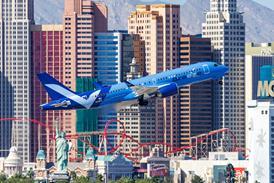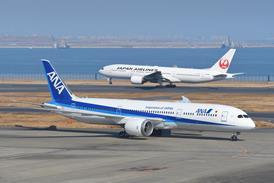MURDO MORRISON / GENEVA
Hours after terrorists tried to down an Israeli airliner with two SA-7 surface-to-air missiles near Mombasa airport last November, representatives of worried foreign heads of state began contacting Gulfstream's Savannah, Georgia, offices. "My phone rang a lot that day," says Dobie Gilfillan, manager of foreign and domestic infrared countermeasures (IRCM) programmes.
Gulfstream is the only business aircraft manufacturer to offer an IRCM jammer on its jets. It has delivered seven aircraft - six GIV-SPs and one GIV - with jammers fitted since launching the BAE Systems ALQ-204(V) Matador IRCM as an option on its larger aircraft at the National Business Aviation Association show in 2000. Two G400s are in completion for handover to customers this year.
Although the launch was prompted by an overseas customer who approached Gulfstream in late 1997, several of the sales have been in the past six months. Gilfillan is reluctant to give any details about buyers, but most, if not all, are understood to be overseas governments for aircraft used as head-of-state transports.
However, the company believes there is a market among US-based executives who would prize the extra security. "We have a tremendous interest in making this available to the public just like EVS [enhanced vision system]," says Gilfillan. Business leaders who fly into unstable countries, such as those in Africa, the Middle East and some former Soviet republics, are thought to be high on Gulfstream's hit list.
The system is available as a retrofit on the GIV, GIV-SP and GV and now as a "completion centre option" on new G300s, G400s, G500s and G550s. The price tag is $3 million, but this might come down. "It is working so well that it doesn't need the parts support we thought it would and this could affect the price," says Gilfillan.
Gulfstream, which exhibited the Matador on a "green" G550 at the European Business Aviation Conference and Exhibition in Geneva earlier this month, believes its competitors would take two years to obtain certification for a similar system. Although the BAE system is off-the-shelf, Gilfillan says Gulfstream took two years, including eight months of flight tests, to qualify the tailcone installation.
"It's 1980s technology, but that's why we are able to export it and sell it for civilian use," says Gilfillan. He believes the greatest advantage of the Matador as a countermeasures system is that it is passive. Unlike alternatives which eject flares to decoy heat-seeking missiles, the Matador produces a pulsed infrared signal that confuses the seeker.
"The system is activated during take-off and landing and switched off once the aircraft is out of range of shoulder-launched SAMs - usually at around 5,000-10,000ft [1,500-3,000m].
"You can turn it on at any airport and no-one on the ground knows it's working," says Gilfillan. "Yet terrorists could fire 15 missiles at it at once and it would take out every one."
Source: Flight International























